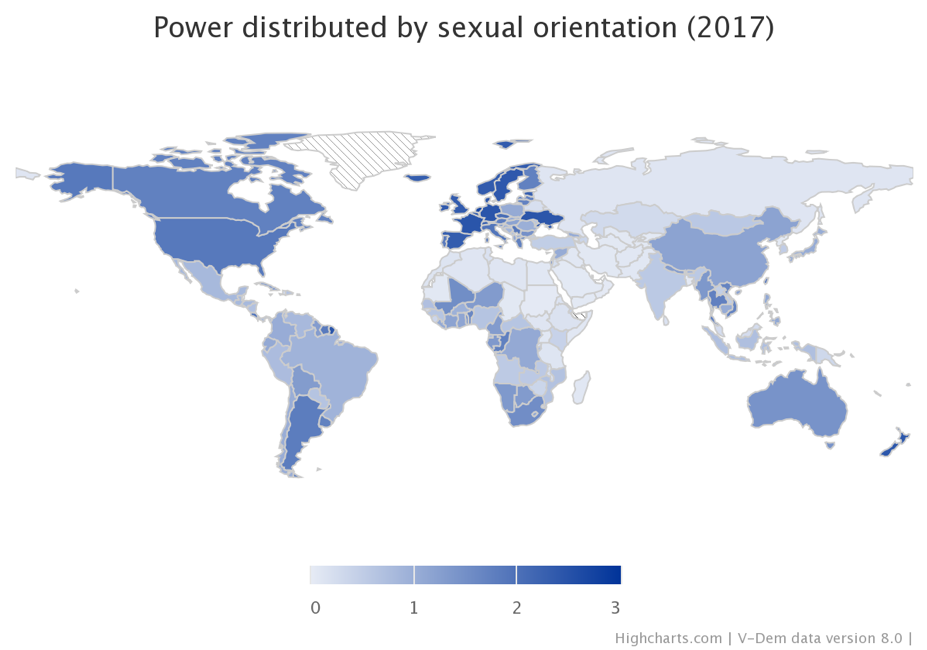The LGBT Community and Access to Political Power
By: V-Dem Staff
Jan 29, 2019
In 1967, Canada’s Pierre Trudeau (at the time Justice- and later Prime Minister), father of Canada’s current Prime Minister Justin Trudeau, famously declared that: “There is no place for the state in the bedrooms of the nation”. The comment was made in reference to the ongoing debate on decriminalization of homosexuality in Canada, which came into effect in 1969.
How far has the world come since 1969 when it comes to LGBT-related issues? Using our Interactive Maps tool, this week’s map gives an overview of how political power is distributed by sexual orientation (relative to the share of the population) across the world. The map shows the country scores for 2017 with values between 0 and 3. The light blue areas illustrate countries where the LGBT community is deprived of any real political power (value of 0) or where its members have much less political power than heterosexuals (value of 1). The darker the shade of blue, the more equal is the distribution of power by sexual orientation. A value of 3 suggests that each group enjoys a degree of political power that is roughly proportional to their population. The figure illustrates that only a few countries in Europe and New Zealand reach values between 2 and 3. In contrast, an alarmingly large number of countries are light blue, which indicates that an equal distribution of power by sexual orientation worldwide is far from becoming a reality. In many countries, LGBT members are still having to argue for what Pierre Trudeau stated in Canada over 50 years ago: that there is no place for the state in the bedrooms of the nation.
To check out V-Dem’s graphing tools and to learn more about our indicators and different ways to measure democracy, please visit v-dem.net.


